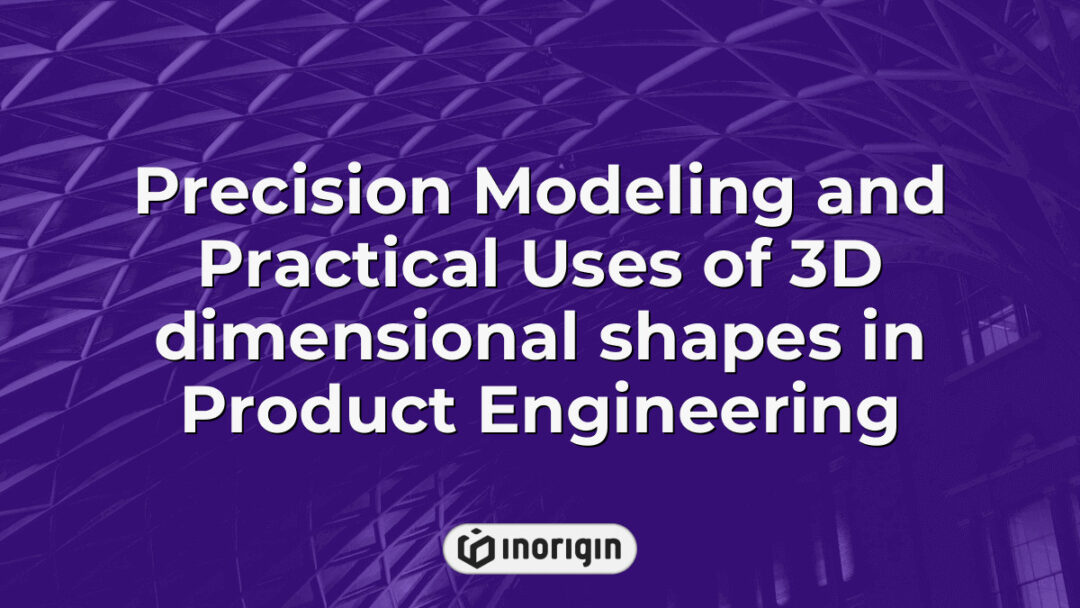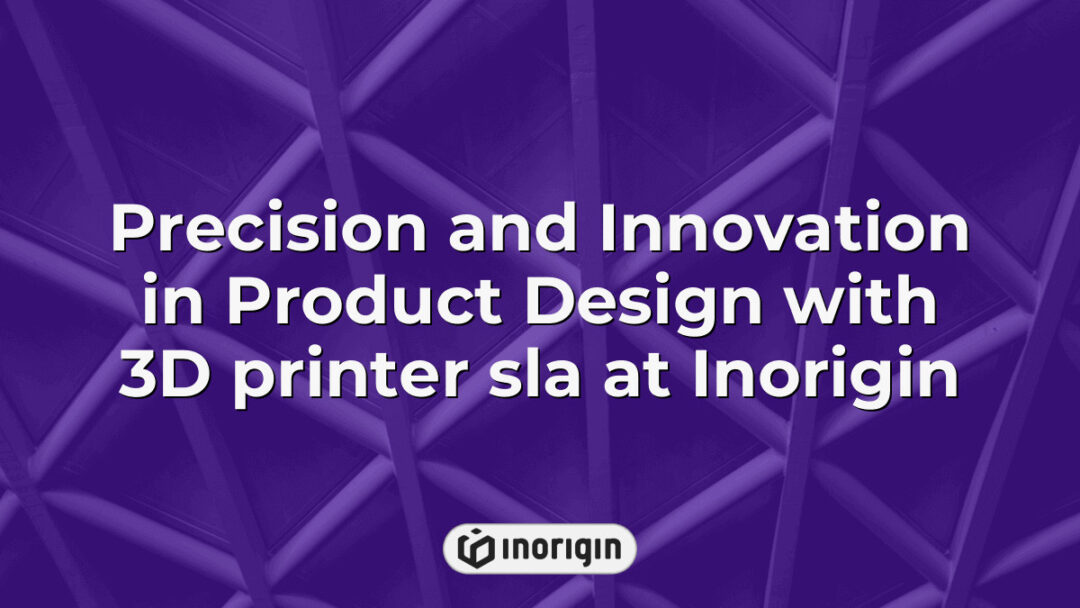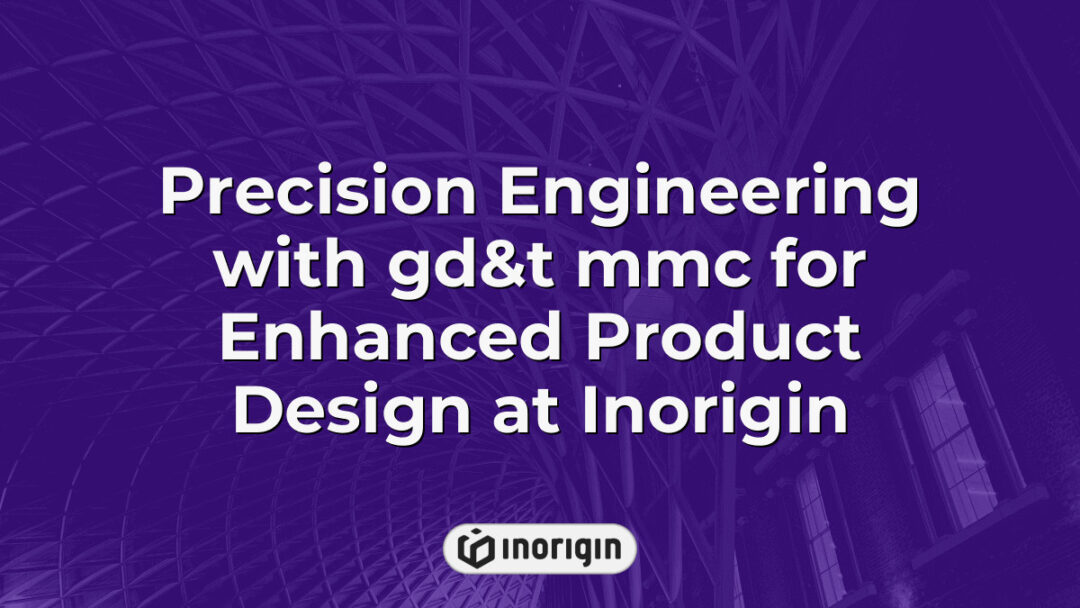Have you ever wondered what sets successful products apart from the rest? The answer may lie in incorporating design thinking into your product development process. By prioritizing user empathy, creativity, and experimentation, design thinking can help companies create innovative solutions that truly resonate with their target audience. In this article, we will explore why you should consider integrating design thinking into your own product development strategy and how it can lead to more impactful and customer-centric outcomes.
| Aspect | Key Takeaway |
|---|---|
| Focus Keyword | Why Should You Consider Design Thinking in Your Product Development Process? Because it prioritizes user empathy, creativity, and iterative problem-solving to create innovative, customer-centric products. |
| User Empathy | Understanding user needs through empathy uncovers crucial insights that lead to products aligning closely with real customer desires and pain points. |
| Creativity & Innovation | Design thinking fosters creativity by encouraging diverse perspectives and iterative prototyping, enabling breakthrough product solutions. |
| Iteration & Prototyping | Rapid prototyping and iterative testing help identify issues early and refine designs, ensuring functionally robust and user-friendly products. |
| Human-Centered Approach | Focusing on human-centered design increases customer satisfaction, builds brand loyalty, and drives long-term business growth. |
| Cross-Functional Collaboration | Integrating diverse expertise from design, engineering, and marketing enhances problem-solving and results in market-ready, compelling product designs. |
| Overcoming Challenges | Promoting a culture of creativity, providing training, and encouraging open communication are key to successfully integrating design thinking. |
What Is Design Thinking And How Does It Differ From Traditional Product Development?
Design thinking, a term often thrown around in the world of product development as the latest trend to follow. But what exactly is design thinking and how does it differ from traditional product development methods? Design thinking can be seen as a more human-centered approach that focuses on empathy, collaboration, and iterative problem-solving. In contrast, traditional product development tends to be more linear and focused solely on meeting predetermined specifications without much consideration for user needs or feedback. So, when considering design thinking in your product development process, you are essentially shifting towards a more innovative and customer-centric mindset.
Now let’s delve deeper into the concept of design thinking and understand its fundamental principles before exploring further into why it should be incorporated into your product development strategy.
The Importance Of Understanding User Needs And Empathy In The Design Thinking Process.
When considering design thinking in your product development process, it is essential to understand the importance of user needs and empathy. By focusing on empathizing with users, you can gain valuable insights into their experiences, preferences, and pain points. This understanding allows you to create products that truly resonate with your target audience and meet their specific needs effectively.
Furthermore, incorporating empathy into the design thinking process enables you to develop a deeper connection with your users. By putting yourself in their shoes and seeing things from their perspective, you can uncover hidden opportunities for innovation and improvement. Empathy helps foster a human-centered approach to product development, ensuring that your solutions are not only functional but also meaningful and impactful.
By embracing empathy within the design thinking process, you can enhance the overall user experience and drive greater success for your products. This emphasis on understanding user needs and emotions paves the way for creativity and innovation to flourish in your product development efforts. Through this lens of empathy, you can unlock new possibilities and deliver solutions that truly make a difference in people’s lives.
How Design Thinking Fosters Creativity And Innovation In Product Development.
Design thinking is a powerful approach that fosters creativity and innovation in product development. By encouraging teams to think outside the box and consider multiple perspectives, design thinking helps generate fresh ideas that can lead to breakthrough solutions. This process allows for experimentation and iteration, enabling teams to explore different possibilities before settling on a final product design. Additionally, design thinking emphasizes the importance of prototyping as a means of testing ideas quickly and gaining valuable feedback from users. Through this iterative process, product developers can refine their concepts based on real-world insights, ultimately leading to more successful products.
As we delve deeper into the role of iteration and prototyping in the design thinking process…
The Role Of Iteration And Prototyping In The Design Thinking Process.
When implementing design thinking in your product development process, the role of iteration and prototyping is crucial. By embracing an iterative approach, teams can continuously refine their ideas through feedback and testing. This allows for rapid adjustments based on user insights, leading to more effective solutions. Prototyping also plays a significant role in bringing concepts to life and visualizing how they will function in real-world scenarios. Through this hands-on experimentation, teams can uncover potential issues early on and make necessary improvements before finalizing the product.
Incorporating iteration and prototyping into the design thinking process ensures that products are thoroughly tested and refined before launch. This methodical approach not only fosters creativity but also encourages innovation by promoting a mindset of continuous improvement. As teams cycle through iterations and gather feedback from users, they gain valuable insights that inform their decision-making and drive meaningful change within their products. The emphasis on prototyping further enhances collaboration among team members as they work together to bring ideas to fruition. By embracing these principles, organizations can create products that truly resonate with their target audience while staying ahead of the competition.
The Benefits Of A Human-centered Approach In Product Development.
When it comes to product design, incorporating a human-centered approach can lead to numerous benefits. By focusing on the needs and experiences of users throughout the development process, companies can create products that truly resonate with their target audience. This approach involves gathering insights from real users through research and testing, which helps in refining the design based on actual feedback. Additionally, by prioritizing user satisfaction and usability, businesses can increase customer loyalty and drive sales.
Furthermore, taking a human-centered approach in product development allows companies to differentiate themselves in the market by offering solutions that address specific pain points and provide meaningful value to customers. By understanding the emotions and behaviors of users, designers can create more intuitive and engaging products that stand out from competitors. This not only enhances brand perception but also fosters long-term relationships with customers who feel understood and valued.
By embracing a human-centered approach in product design, organizations can tap into new opportunities for innovation and growth while creating products that truly meet the needs of their target audience. This customer-centric mindset not only leads to improved user satisfaction but also translates into increased profitability and sustainable business success. In this way, design thinking serves as a powerful tool for companies looking to develop more successful and user-friendly products without losing sight of their core values or objectives.
How Design Thinking Can Lead To More Successful And User-friendly Products.
Have you ever wondered what sets successful and user-friendly products apart from the rest? The answer lies in incorporating design thinking into your product development process. By considering design thinking, you can ensure that your products not only meet but exceed customer expectations. Here are five ways design thinking can lead to more successful and user-friendly products:
- Enhances user experience through empathy-driven insights
- Encourages innovative solutions by fostering creativity
- Reduces risk by iterating and testing ideas early on
- Increases efficiency by streamlining the development process
- Builds a strong connection with customers by involving them in the design process
With these benefits in mind, it’s clear why design thinking is essential for creating products that truly resonate with users. Moving forward, let’s explore the value of cross-functional collaboration in design thinking as we continue to delve deeper into optimizing our product development process.
The Value Of Cross-functional Collaboration In Design Thinking.
When it comes to product development, the value of cross-functional collaboration in design thinking cannot be overstated. By bringing together individuals with diverse backgrounds and expertise, a more holistic approach can be taken towards problem-solving and innovation. This creative process allows for different perspectives to be considered, leading to unique solutions that may not have been possible otherwise. In essence, the synergy created through cross-functional collaboration enhances the overall quality of the final product.
Now let’s delve into real-world examples of companies successfully implementing design thinking in their product development.
Real-world Examples Of Companies Successfully Implementing Design Thinking In Their Product Development.
When it comes to understanding the value of design thinking in product development, real-world examples of companies successfully implementing this approach can provide valuable insight. Companies like Apple, Google, and Airbnb have all embraced design thinking principles in their product development process, leading to innovative solutions that resonate with consumers. For instance, Apple’s focus on user experience and intuitive design has set them apart in the tech industry, while Google’s emphasis on empathy and experimentation has yielded groundbreaking products like Gmail and Google Maps. Similarly, Airbnb’s customer-centric approach to design thinking has revolutionized the hospitality industry by creating a seamless booking platform that prioritizes user needs.
Transitioning into discussing overcoming common challenges and misconceptions about design thinking…
Overcoming Common Challenges And Misconceptions About Design Thinking.
One common misconception about design thinking in business is that it can be a time-consuming and expensive process. However, according to a recent study by McKinsey & Company, companies that incorporate design thinking into their product development process are able to increase revenue by up to 32%. This statistic highlights the significant impact that design thinking can have on a business’s bottom line. Another challenge businesses face when implementing design thinking is resistance from team members who may be accustomed to more traditional methods of product development. Despite these obstacles, embracing design thinking can lead to innovative solutions and products that better meet customer needs.
To successfully overcome these challenges and misconceptions about design thinking in business, it is essential for organizations to foster a culture of creativity and collaboration among team members. Encouraging open communication and valuing diverse perspectives can help break down barriers to incorporating design thinking into the product development process. Additionally, providing training and resources for employees to learn about the principles of design thinking can empower them to embrace this approach and contribute new ideas. By addressing these common challenges head-on, businesses can unlock the full potential of design thinking and drive innovation within their organization.
As you consider how to incorporate design thinking into your own product development process, remember that overcoming challenges and misconceptions is just the first step towards success. By focusing on fostering a creative and collaborative environment within your team, you can set the stage for innovative solutions that truly resonate with customers. Embrace the principles of design thinking wholeheartedly, and watch as your products evolve in ways you never thought possible.
Tips For Incorporating Design Thinking Into Your Own Product Development Process.
If you want to revolutionize your product development process, incorporating design thinking is like adding jet fuel to a rocket. By following these tips and strategies for integrating design thinking into your workflow, you’ll be able to innovate faster, create more user-centric products, and stay ahead of the competition. First and foremost, start by fostering a culture of empathy within your team, allowing everyone to understand the needs and desires of your users on a deeper level. Next, encourage cross-functional collaboration by bringing together individuals from different departments to bring diverse perspectives to the table. Additionally, don’t be afraid to embrace failure as part of the iterative design process – it’s through experimentation and learning that true innovation happens.
By infusing design thinking into your product development process, you can unlock endless possibilities for creativity and problem-solving. Remember that this approach isn’t just about creating beautiful designs; it’s about truly understanding and meeting the needs of your users in meaningful ways. So go forth with confidence, armed with these tips for success in applying design thinking principles within your organization.
Frequently Asked Questions
Can Design Thinking Be Applied To All Types Of Products, Or Is It More Suited To Certain Industries Or Types Of Projects?
Design thinking is a versatile approach that can be applied to various types of products, regardless of the industry or project. By focusing on empathy, creativity, and collaboration, design thinking allows teams to better understand user needs and create innovative solutions. This methodology can benefit everything from physical goods like consumer electronics to digital products such as mobile apps or websites.
Furthermore, design thinking is not limited by the nature of the product itself but rather by the mindset and willingness of the team to embrace this human-centered approach. Whether developing healthcare technologies, educational tools, or even services in hospitality, design thinking can help uncover insights that lead to more impactful and successful outcomes for both users and businesses alike.
Incorporating design thinking into your product development process opens up new possibilities for innovation and customer satisfaction across a wide range of industries. This holistic approach encourages continuous learning and iteration based on real user feedback, ultimately leading to more meaningful and valuable products that address genuine user needs.
How Does Design Thinking Account For Market Research And Competitor Analysis In The Product Development Process?
Picture this: you’re embarking on a journey to create the next groundbreaking product in your industry. As you delve into the world of design thinking, you start to realize something intriguing – it’s not just about flashy designs or trendy features. Design thinking actually plays a crucial role in integrating market research and competitor analysis into your product development process. By putting yourself in the shoes of your target audience, empathizing with their needs and preferences, you gain valuable insights that can set you apart from competitors.
As you navigate through the iterative stages of design thinking, you’ll find yourself constantly referring back to market research and competitor analysis. These elements serve as guiding lights, illuminating potential pitfalls and opportunities in your product development journey. By conducting thorough research on market trends, consumer behavior, and competitor strategies, you equip yourself with a solid foundation for making informed decisions at every turn. This proactive approach not only enhances the quality of your product but also increases its chances of success in a competitive marketplace.
Incorporating design thinking into your product development process isn’t just about creating aesthetically pleasing products; it’s about understanding the intricate dance between market dynamics and user expectations. By weaving together insights from market research and competitor analysis, design thinking empowers you to craft products that resonate deeply with your target audience while standing out amidst fierce competition. So next time you embark on a new product development journey, remember – design thinking is more than meets the eye; it’s a strategic tool that propels innovation forward.
What Are Some Common Barriers That Companies Face When Trying To Implement Design Thinking Into Their Product Development Process?
When attempting to incorporate design thinking into the product development process, companies often encounter various barriers that hinder their progress. One common obstacle is a lack of buy-in from key stakeholders within the organization. Without support and enthusiasm from decision-makers, it can be challenging to allocate resources and prioritize design thinking initiatives effectively. Additionally, resistance to change among employees who are accustomed to traditional product development methods can slow down the adoption of new approaches. This reluctance may stem from fear of the unknown or skepticism about the value that design thinking can bring to the table.
Moreover, insufficient training and education on design thinking principles can also impede successful implementation. When team members do not fully understand how to apply design thinking methodologies in practice, they may struggle to generate innovative ideas or collaborate effectively during the ideation phase. Inadequate communication channels between different departments or teams can further exacerbate these challenges by creating silos and preventing cross-functional collaboration essential for holistic problem-solving.
Ultimately, overcoming these barriers requires a concerted effort to foster a culture of creativity, experimentation, and continuous learning within the organization. By addressing issues such as stakeholder alignment, employee engagement, knowledge gaps, and communication breakdowns head-on, companies can pave the way for successful integration of design thinking into their product development processes. Embracing these changes will not only lead to more user-centric products but also drive innovation and competitive advantage in today’s dynamic market landscape.
Conclusion
Embracing design thinking in your product development process can unlock a world of creativity and innovation. By iterating and prototyping with a human-centered approach, you can create more successful and user-friendly products that truly resonate with your customers. So why not take the leap and see where this journey of cross-functional collaboration can take you?
Related posts:
- How Can Design Thinking Impact Your Product Development Process by Enhancing Innovation and User-Centered Solutions at Inorigin
- Design Thinking Impact Product Engineering Driving Innovation and Efficiency at Inorigin
- Why is Design Thinking Essential for Successful Product Development? A Strategic Approach to User-Centered Innovation
- How Can Design Thinking Impact Sustainable Product Design in Creating Innovative and Collaborative Solutions at Inorigin
- How Can Design Thinking Improve Product Development Processes to Drive Innovation and User-Centered Success
- How Can Design Thinking Impact Product Innovation Through Empathy and Collaboration at Inorigin




